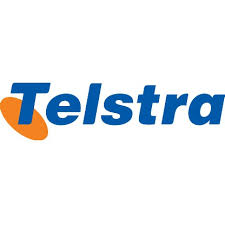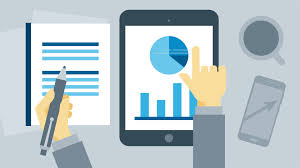
Report on Telstra Corporation Limited
Order Instructions:
instructions are in the two attached files.
SAMPLE ANSWER
Introduction
The listed company that is subject of this report is Telstra Corporation Limited. Telstra Corporation Limited, hereafter referred to as Telstra, is the largest telecommunications and media company in Australia. The corporation builds and operates telecommunication networks in its target markets and also deals in pay television, internet access and mobile voice devices among other services and products (www.telstra.com). Telstra is a public company founded in 1975 and is headquartered in Telstra Corporate Centre in Melbourne in Australia. Telstra’s expenditure in research & development doubled from $2 million in 2013 to $4million in 2014. This attests to the importance that the company places on research & development activities in its business model (www.telstra.com). Telstra was initially a company owned by the government but was later privatized in three separate stages in 1997, 1999 and the last stage in 2006. In the first stage in 1997, the government sold A$14billion and floated the company’s share in the Australian Stock Exchange in an initial public share offer (IPO). The 1999 privatization saw the government reduce its shareholding to 51% after selling 16% shares in the company (www.telstra.com). The 2006 divestiture from the company resulted in the government placing the remaining shares it still held in Australia’s Future Fund which in effect made the Australian government a minority shareholder in the company. Subsequent divestitures in 2009 and 2011 saw the government relinquish all its shares in Telstra. Telstra is the most widely held public company in Australia with over one million shareholders (www.telstra.com).
Brief disclosures that Telstra made for intangible assets in its annual statements as at 30th June, 2014
Telstra disclosed that it had intangible assets of $6,382 million as at 30th June, 2014 as compared to $8,202 million that the company disclosed during the same period in the previous year. This represented a 29% decline in intangible assets in 2014. Intangible assets constituted about 16% of the total non-current assets that the company reported in the financial year ending 30th June, 2014. The company went further to expound on how these intangible assets were computed in its Notes to Financial Statements in Note No. 14(www.telstra.com). The Intangible assets were made up of goodwill of $395 million and internally generated intangible assets which included software assets developed for internal use of $4,265 million. Acquired intangible assets also formed part of the intangible assets that the company reported in the financial year ending 30th June, 2014. Acquired intangible assets were made up of patents and trademarks of $12 million, licenses of $816 million, customer bases valued at $ 42 million and brand names of $ 9 million. Deferred expenditure was also included as part of intangible assets and was valued at $843 million (www.telstra.com). The company has gone ahead to explain how the intangible assets were incurred in the same note to the financial statements. The company closed the year with software assets that were under development which were not ready for use and which were recorded as intangible assets. The company capitalized costs for borrowing that related to the software assets and spectrum licenses and captured them as intangible assets (www.telstra.com). Deferred expenditure related to deferral of direct incremental costs that were incurred by the company to establish customer contracts. These costs were amortized in the income statement to goods and services purchased during the period. Connection and basic access installation fees were also included in deferred expenditure that formed part of the intangible assets in the financial year ending 30th June, 2014
Disclosures made by Telstra on intangible assets and their consistency with the requirements of paragraphs 118 – 123 and paragraphs 126 – 128 of AASB 138 on Intangible Assets
According to paragraphs 118-123 and paragraphs 126-128 of AASB 138 on intangible assets, Telstra is required to disclose internally generated intangible assets and other intangible assets or intangible assets that are not generated from within the company (Deegan, 2012). Telstra has endeavored to do that to some degree in its annual report for the financial period ending 30th June, 2014. The company is required by paragraph 118 of AASB 138 on intangible assets to disclose whether the useful lives of the intangible assets are finite or indefinite (Deegan, 2012). The company has not disclosed this fact for all the intangible assets listed in its annual report for financial period ending 30th June, 2014. The company is also required to provide amortization rates used which have not been provided. The treatment of intangible assets by Telstra is therefore in contravention to paragraphs 118-123 and paragraphs 126-128 of AASB 138 on intangible assets. For intangible assets with finite useful lives, the company is required to disclose amortization methods used in treating these assets which has been provided for some of the assets but not for all of them (Deegan, 2012). Paragraph 118-123 and paragraphs 126-128 of AASB 138 on intangible assets requires that the company discloses its gross carrying amount and any accumulated amortization. Telstra has provided this information on page 113 of the annual report for the financial year ending 30th June, 2014. Reconciliation for the carrying amount is also a requirement in paragraph 118-123 and paragraphs 126-128 of AASB 138 on intangible assets. This is a requirement that Telstra has fulfilled on page 113 of the annual report. Amounts amortized on the intangible assets are to be expensed in the income statement for the period; a requirement that has been complied with by Telstra
(Devalle &Rizzato, 2012; http://www.aasb.gov.au/admin/file/content102/c3/AASB138_07-04_ERDRjun10_07-09.pdf).
The company is also required to group assets of a similar nature and use in the method it treats intangible assets. Telstra has treated intangible assets according to use and similarities in how they are used. Licenses are treated or grouped together, masts are grouped together, customer bases are grouped together and deferred expenditures are also grouped together in accordance with paragraph 118-123 of the AASB138 on Intangible Assets (Deegan, 2012). An entity is also required to disclose information on intangible assets which Telstra has done in its annual reports as at 30th June, 2014. The company has not however provided an assessment of the useful life of some of its intangible assets and the residual value which is in contravention of the paragraph 118-123 of the AASB138 on Intangible Assets (www.telstra.com). According to paragraphs 126 – 128 of AASB 138 Intangible Assets, Telstra is required to disclose the aggregate amount of research and development expenditure and the amount should be treated as an expense in the accounting period. Telstra has consistently done that as it included research and development expenses of $4 million incurred as part of the operating expenses for the period and expensed them in the income statement. The company also disclosed intangible assets that were fully amortized and those that were not in accordance with paragraphs 126 – 128 of AASB 138 Intangible Assets
References
Deegan, C. (2012), Australian Financial Accounting, 7th edition, McGraw Hill
Devalle, A., PhD.,&Rizzato, F., PhD. (2012). The impairment test of goodwill and the quality of
mandatory disclosure required by IAS 36.: An empirical analysis of european listed companies. GSTF Business Review (GBR), 2(1), 1-6. Retrieved from http://search.proquest.com/docview/1039135033?accountid=45049
http://www.aasb.gov.au/admin/file/content102/c3/AASB138_07-04_ERDRjun10_07-09.pdf
We can write this or a similar paper for you! Simply fill the order form!











